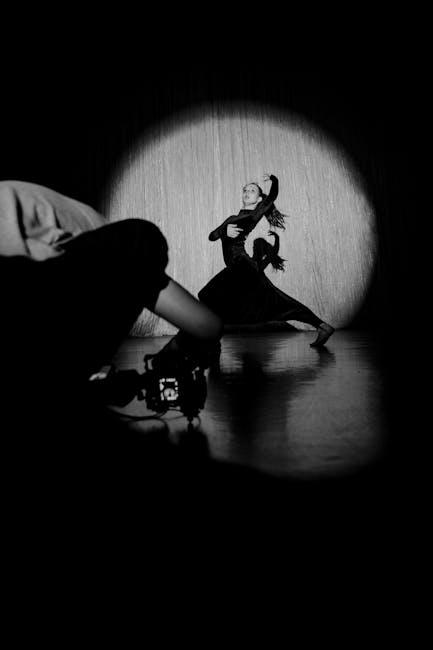In the vast tapestry of cinema, few directors weave as enigmatic and profound a narrative as Terrence Malick. Known for his ethereal visuals and contemplative storytelling, Malick’s films transcend conventional boundaries, inviting audiences into a world where philosophy and art coalesce. His visionary style, marked by a profound exploration of existence and nature, challenges viewers to reflect on the intricate dance between humanity and the cosmos. This article delves into the philosophical underpinnings of Malick’s work, unraveling the unique cinematic language that sets him apart as a luminary in the world of filmmaking.
Exploring the Ethereal: Malicks Cinematic Language
Terrence Malick’s films are a visual symphony, weaving together images, sounds, and silences to create an ethereal experience that transcends conventional storytelling. His cinematic language is characterized by a few distinctive elements:
- Visual Poetry: Malick’s use of natural light, sweeping landscapes, and intimate close-ups crafts a poetic visual narrative. His camera often glides through scenes, capturing fleeting moments of beauty and emotion.
- Philosophical Voiceovers: His films frequently feature introspective voiceovers that delve into existential questions, inviting viewers to ponder life’s mysteries and the human condition.
- Non-linear Structure: Embracing a fluid narrative style, Malick often eschews traditional plot structures, allowing scenes to flow like memories or dreams.
Through these elements, Malick’s films become meditative explorations of time, nature, and spirituality, inviting audiences to experience cinema as a profound reflection on existence.

Nature as a Muse: The Role of Environment in Malicks Films
In Terrence Malick’s films, the environment transcends its role as mere backdrop, becoming a dynamic character in its own right. His cinematic landscapes are not just visually stunning but deeply intertwined with the narrative, shaping and reflecting the internal journeys of his characters. Malick’s profound connection to nature is evident in his use of natural light, the fluidity of his camera movements, and his penchant for capturing the subtleties of the natural world. These elements combine to create a visual poetry that speaks to the core of human experience.
- Symbolism: Nature often serves as a metaphor for the characters’ emotional states, illustrating themes of growth, decay, and renewal.
- Philosophical Depth: The natural world in Malick’s films invites viewers to ponder existential questions, blurring the line between the tangible and the transcendental.
- Visual Storytelling: His preference for long, contemplative shots immerses the audience in the environment, fostering a visceral connection to the story.
Malick’s unique ability to weave the environment into the fabric of his storytelling not only enhances the aesthetic quality of his films but also enriches their philosophical depth, inviting audiences to reflect on their own relationship with the world around them.

The Dance of Light and Shadow: Visual Poetry in Malicks Work
In the works of Terrence Malick, the interplay between light and shadow serves as a visual symphony that transcends traditional storytelling. His films often explore the delicate balance between nature and humanity, capturing moments where light dances across landscapes, creating a tapestry of visual poetry. Malick’s use of natural lighting and shadow is not merely aesthetic; it is deeply philosophical, reflecting themes of impermanence, beauty, and the passage of time.
- Natural Light: Malick often shoots during the “golden hour,” utilizing the soft, diffused light to evoke a sense of wonder and introspection.
- Silhouettes and Shadows: Characters are frequently framed in silhouette, symbolizing the enigmatic and transient nature of existence.
- Symbolic Contrast: The contrast between light and shadow mirrors the dualities of life, such as joy and sorrow, or creation and destruction.
Through this meticulous crafting of visuals, Malick invites viewers to ponder the mysteries of the universe, urging them to find meaning in the ephemeral beauty of the world around them.

Philosophical Musings: Time, Memory, and Existence in Malicks Narrative
In Terrence Malick’s films, the intricate dance between time, memory, and existence unfolds with a poetic grace that challenges conventional storytelling. His narratives often eschew linear progression, embracing a fluidity that mirrors the fragmented nature of human recollection. Characters drift through moments that are both fleeting and eternal, suggesting a universe where time is less a line and more a tapestry.
Malick’s visionary approach invites audiences to ponder profound existential questions. Through visual and auditory motifs, he explores themes such as:
- Transience of Life: A meditation on the ephemeral nature of existence, where moments are savored yet inevitably pass.
- Interconnectedness: A portrayal of the subtle threads linking individual memories to a collective human experience.
- Search for Meaning: A quest that resonates through his characters’ introspections, often depicted against vast, contemplative landscapes.
In essence, Malick’s work transcends traditional narrative boundaries, crafting a cinematic experience that is as much about feeling and reflection as it is about storytelling.

